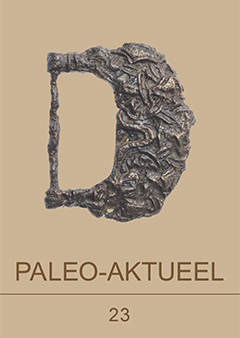Oost-Europese granen in 17e-eeuwse beerputten in Groningen
Samenvatting
Eastern European cereals in 17th-century cesspits in Groningen. In seven cesspit samples (dated c. AD 1600-1700) we found the valve of the exotic arable weed Ball Mustard. Its discovery indicates Hanseatic contact with Poland. In samples taken from late 16th-century/early 17th-century shipwrecks, this exotic is found with seeds of other crops besides wheat. By mapping the distribution of the arable weeds which occurred among the wheat, it was found that the wheat cargoes from the ship had their origin in the Baltic. In the 16th and 17th centuries Amsterdam was the world’s major cereal dealer. If Groningen did not itself trade with the Baltic, trade probably proceeded through Amsterdam dealers. Consumption of cereals from the Baltic may well explain the presence of Ball Mustard.

